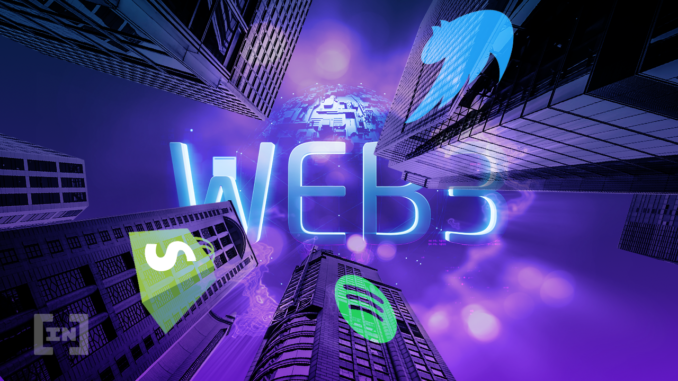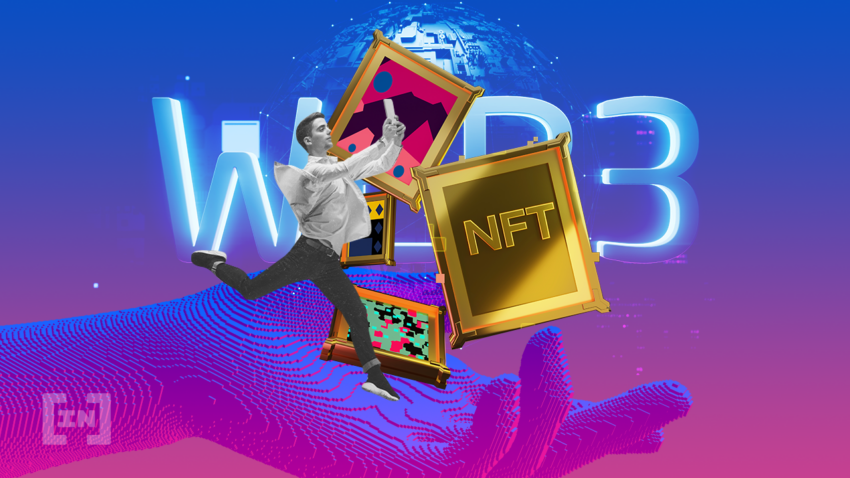
In the early days of the Internet, companies like AOL and Prodigy built closed networks that were incompatible with any other network. This meant that users could only access content and services within those siloed ecosystems.
But, through products like Netscape Navigator and Microsoft’s Internet Explorer, the Internet eventually became an open platform where anyone could build on top of existing infrastructure. This openness was key to its explosive growth and resulted in innovations we now take for granted, like Google and Facebook.
Today, we are on the cusp of a new era of openness enabled by blockchain technology. This new wave of open infrastructure–often referred to as Web3-holds the promise of even more radical innovation and growth. The advantages of the decentralized structure of Web3 include increased transparency among participants, elimination of the need for 3rd parties, and lower costs. Composability, or the ability of different applications to work together and build on each other, is an extension of these advantages.
One of the most exciting aspects of composability is that it enables a multitude of use cases. For example, developers can use existing programs and build on top of them to create new applications. This open code and interoperability open up a world of possibilities for improving existing dApps, connecting various dApps to each other, and developing new standalone dApps.
At a broad level, there are two types of composability: syntactic and atomic. Syntactic composability refers to viewing components as independent building blocks that can be combined to form entirely new systems. For instance, a crypto swap smart contract is a building block that anyone can use to create a new application. And because these building blocks are open source, they can be freely modified and reused.
Atomic composability uses the principle of atomicity, or multiple actions being combined into one transaction, to enable different contracts to interact with each other. For instance, automated market makers (AMMs) are a type of smart contract that allows users to trade tokens without the need for a centralized exchange. But AMMs can only trade a limited number of tokens.
However, if we combine AMMs with synthetic assets—which are digital representations of real-world assets like stocks, commodities, and fiat currencies—we can create a much more powerful platform that can trade any asset. This is just one example of how atomic composability can be used to create new and innovative applications.
At the heart of DeFi is Web3 accounting, whereby a shared, immutable, multi-signed ledger affords transparent finance and global flexibility. For instance, a single composable transaction could pay multiple invoices owed to different people. This could have a major impact on the way businesses operate, as it would eliminate the need for time-consuming and error-prone manual reconciliation processes.
In addition, DeFi and Web3 accounting are by nature inclusive, providing financial services to those who are underserved by traditional banking. One firm, Bulla Network, is already using composability to streamline invoicing and payments.

It’s important that the infrastructure for Web3 is built on open-source principles. In the context of composability, “open-source” doesn’t just mean that the code is available for anyone to view. After all, that’s a given. Open-source also means that users don’t need to get locked into a specific platform or provider.
For example, Web3 applications that use databases and require users to set up an account are not actually providing true or “native” Web3 services. But with truly open-source applications, users don’t need to set up an account. They can just connect their wallet to the application and start using it. This is the case with Bulla, which allows users to connect their wallets and start invoicing, making payments, and managing all their Web3 finances without having to set up an account.
Openness also allows for greater innovation because it enables developers to build on existing infrastructure rather than starting from scratch. This was the case with the Internet, and it’s already happening with Web3. For example, the DeFi app Arrakis Finance was built on Uniswap, which itself was built on Ethereum.
The composability of Web3 will accelerate innovation and growth in the years to come. It will enable a new wave of open-source applications that are more user-friendly, interoperable, and resilient. We are just beginning to scratch the surface of what’s possible. So fasten your seatbelts—it’s going to be a wild ride.
Got any further questions? The experts in our BeInCrypto Telegram group will be happy to help you out. There you can also get free trading signals and quotes and interact with other crypto fans on a daily basis!
Disclaimer
All the information contained on our website is published in good faith and for general information purposes only. Any action the reader takes upon the information found on our website is strictly at their own risk.





Be the first to comment